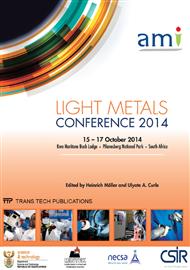p.259
p.266
p.273
p.280
p.287
p.294
p.302
p.311
p.318
Influence of Process Heat Input on Static and Dynamic Properties of Friction Stir Welded 3mm Ti6Al4V Alloy
Abstract:
This paper presents an investigation on the influence of varying heat input during friction stir welding of Ti6Al4V alloy, with respect to static and dynamic joint integrity. Weld heat input was controlled by varying the rotational-and tool travel speed. In the absences of large defects the welded samples failed predominately in the parent plate, while percentage elongation for all welds was lower than that of the original material. To quantify the influence of joint geometry on dynamic joint integrity, the test samples were categorised into “as-welded” and “polished” conditions for ease of comparison. Welds done at medium heat input exhibited improved fatigue strength in both conditions, while crack initiation sites for the as-welded condition was predominantly from tool shoulder marks whereas the polished sample initiation sites could be mainly linked to subsurface defects in the weld nugget. The relationship between welding tool geometry, weld defects and-process parameters is also discussed in an attempt to identify interrelationships that could be linked to joint integrity.
Info:
Periodical:
Pages:
287-293
Citation:
Online since:
October 2014
Authors:
Keywords:
Price:
Сopyright:
© 2014 Trans Tech Publications Ltd. All Rights Reserved
Share:
Citation:


